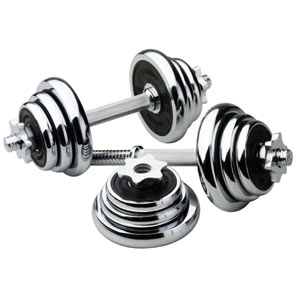
The right weight level depends on what you want to achieve from your training, because it relates to the number of reps that you perform. To develop strength, you want to do one to six reps. To increase muscle size, do between 6 to 12 reps. And, to improve endurance, do between 12 and 20 reps. A onerep max equals the total amount of weight you can lift with one repetition and means you’re giving a 100 percent effort. More reps represent what are referred to as sub-maximal loads. See the bullet points below for reference.
_ 1 rep = 100 percent
_ 2-3 reps = 95 percent
_ 4-5 reps = 90 percent
_ 6-7 reps = 85 percent
_ 8-9 reps = 80 percent
_ 10-11 reps = 75 percent
_ 12-13 reps = 70 percent
_ 14-15 reps = 65 percent
_ 16-20 reps = 60 percent
As you can see, a moderate intensity workout of lifting 70 to 80 percent of your one rep max is in the 8 to 13 rep range. Performing fewer reps — and using ultra-heavy weights — carries a greater risk of injury. And doing more than 12 reps is generally not effective for building strength, but doing up to 20 to 25 reps does improve muscular endurance. To keep yourself motivated and your muscles challenged, you may want to vary the number of reps you perform. You can use a periodized program that first emphasizes muscular strength and then later emphasizes muscular endurance. For example, you can do 6 to 8 repetitions one month and then 12 to 15 the next. Finding the right weight for each exercise requires some trial and error. Don’t be afraid to add or subtract weight after you start a set. We’ve seen people contort their bodies to finish a set just because they overestimated what they could lift but who were too embarrassed, too stubborn, or simply not aware of the huge risk of injury to drop down a plate.

No comments:
Post a Comment